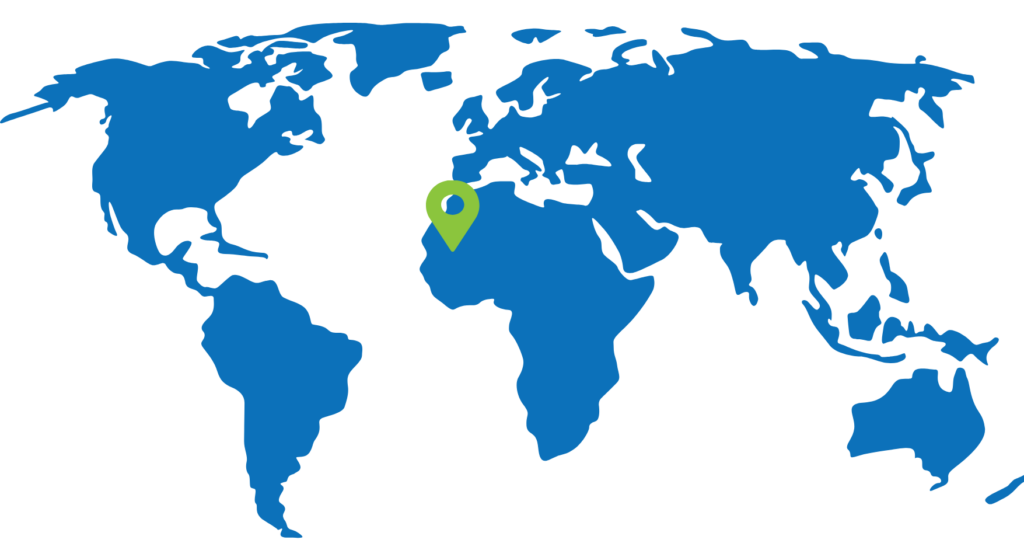On April 28, 2025, Mauritania has released its final edition of the Tableau National d’Attribution des Bandes de Fréquences (TNAF), a comprehensive reference that governs the allocation and use of radio frequencies across the country. This document, issued by the Autorité de Régulation, serves as the official guide for the use of spectrum in Mauritania from 8.3 kHz to 3000 GHz, and plays a vital role in ensuring interference-free operation of radiocommunication services while aligning with international and regional frameworks.

The Foundation of Spectrum Regulation in Mauritania
The TNAF is built upon three core legal and regulatory layers:
- International Regulations: Principally the ITU Radio Regulations, which provide global rules for spectrum use, including satellite orbit management and service-based allocations (e.g., Article 5 of the ITU RR).
- Regional Agreements: Includes frequency coordination efforts with organizations such as CEN-SAD (Community of Sahel-Saharan States) and the Union du Maghreb Arabe (UMA).
- National Legislation: Mauritania’s authority is defined by key laws:
- Law 2001-18 (establishing the regulatory authority)
- Law 2013-025 on electronic communications
- Law 2022-014, which updates the 2013 legislation
- Regulatory decree No. 126, defining the structure of spectrum management
As mandated by national law, the Regulatory Authority (ARE) is the sole authority in charge of spectrum assignments and allocations within the country.
Frequency Management Highlights
The TNAF provides a detailed mapping of how frequency bands are distributed among services. Each allocation is contextualized with three categories of reference:
- International Allocations – ITU classifications for each frequency band (Region 1 applies to Mauritania).
- National Allocations – Country-specific designations or exceptions, often marked with “MTN.X” notes.
- Service Applications and Observations – Specific use cases or limitations, such as passive-only use or shared civil-military applications.
Key use categories include:
- Fixed and Mobile Services: Both terrestrial and maritime, including exclusive and shared bands.
- Aeronautical and Maritime Navigation: Specific bands for radionavigation and emergency communication (e.g., 2182 kHz for distress).
- Broadcasting: Terrestrial broadcasting bands, often overlapping with international usage plans.
- Scientific and Time Signal Services: Bands allocated for standard frequencies and time signals (e.g., 2,500 kHz, 5,000 kHz).
Additionally, the TNAF notes priority protection for services with sensitive use cases (e.g., meteorology, distress systems) and sets limits on interference to ensure operational stability.
Regulatory Conditions and Authorization Requirements
Exclusive Authority: Mauritania’s regulatory framework centralizes all spectrum decisions under the Autorité de Régulation, which has exclusive authority to allocate or assign frequency bands.
Licensing Requirements: All spectrum users—except for short-range, low-power devices—must obtain prior authorization. This includes fixed, mobile, and satellite communication systems. Unauthorized or unlicensed use is prohibited.
Military and Confidential Allocations: Bands reserved for military or defense applications are documented in a classified annex, ensuring confidentiality and operational security.
International Coordination: Use of several bands, particularly those near international borders or assigned for global systems (e.g., aviation, maritime), requires coordination with neighboring countries or compliance with ITU procedures.
Shared-Use Restrictions: Some bands are designated for shared civilian and military use or include conditional access for amateur radio with technical limits (e.g., maximum effective isotropic radiated power, or EIRP).
Technical Provisions
The TNAF outlines a series of technical definitions and operational limits that support efficient and interference-free spectrum use. These include:
Emission and Equipment Classes
- Definitions of authorized emission types (e.g., A1A, F1B, J3E), each specifying modulation method and bandwidth.
- Classes of radiocommunication stations are described, including fixed stations, mobile terminals, coastal stations, and space-based platforms.
Frequency Sharing and Bandwidth Usage
- Specific sharing rules apply to services operating in the same or adjacent bands. For example:
- The 5.57 ITU note limits mobile maritime service usage to coastal telegraphy only.
- Passive use bands, such as those used for meteorological observations, are protected from active emissions.
Distress and Safety Systems
- Critical frequencies such as 490 kHz, 2182 kHz, and 121.5 MHz are reserved for maritime and aeronautical distress communication.
- Systems like NAVTEX, NAVDAT, and ACS are incorporated into national plans with detailed coordination obligations.
Radiolocation and Radionavigation
- Bands are allocated for radionavigation services, including those used for aviation (e.g., non-directional beacons) and maritime safety (e.g., radiobeacons).
- Limitations are specified for radar and short-range devices to protect critical navigation signals.
Space Services
- Select bands are reserved for space research and satellite services, and all operations must comply with the latest ITU-R recommendations.
For this article’s source information and any product certification guidance, please contact Global Validity.
Quick Country Facts
Mauritania
Certification Body: Autorité de Régulation (Regulation Authority)
Certification Type: Mandatory
License Validity: 60 Months
Application Language: English
Legal License Holder: Manufacturer
In-Country Testing Requirement: Testing Not Required
Access in-depth regulatory knowledge on over 200 countries and territories with Global Validity’s free proprietary product certification management software, Access Manager. Learn more about the platform here or fill our quick contact form!
Global Validity is your partner for global certification success
Want to learn more about regulatory compliance and how we can help? Simply fill out the form below and we’ll be in touch!
